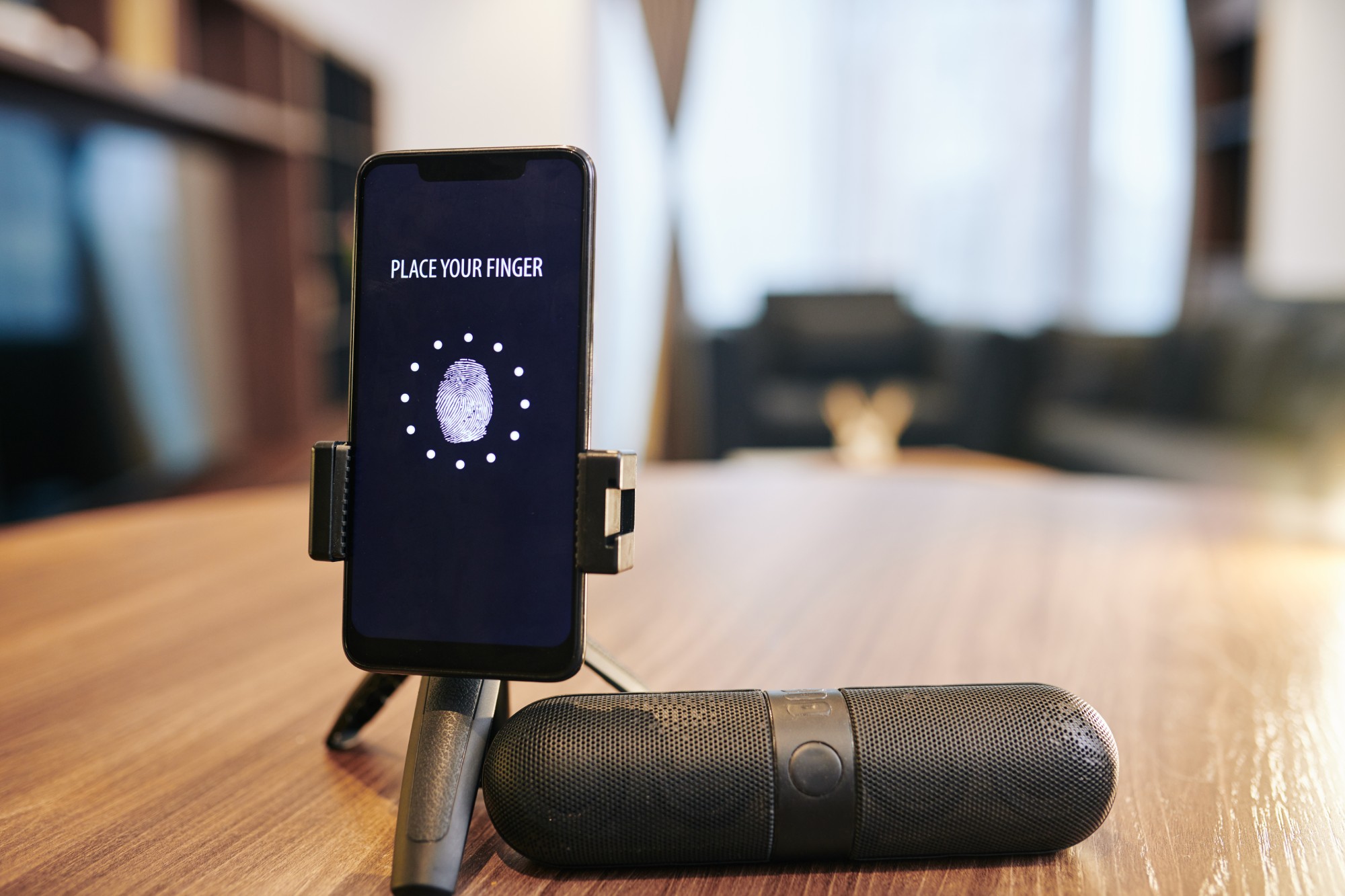Voice commerce represents one of the most significant paradigm shifts in retail and eCommerce since the advent of mobile shopping, fundamentally altering how consumers discover, research, and purchase products. This revolutionary technology leverages artificial intelligence-powered voice assistants to enable hands-free shopping experiences, creating unprecedented opportunities for businesses while reshaping consumer expectations around convenience, personalization, and accessibility. The market is experiencing explosive growth, with 8.4 billion digital voice assistant units active worldwide in 2024, and projections indicating continued expansion as consumer adoption accelerates across multiple demographic segments and use cases.
For enterprise decision makers evaluating digital transformation strategies, voice commerce represents both an opportunity and an imperative. Traditional eCommerce interfaces are becoming increasingly outdated as consumers demand more intuitive, accessible, and efficient shopping methods. Voice-enabled shopping addresses these expectations while simultaneously opening new revenue channels, improving customer engagement, and reducing operational costs. This comprehensive analysis examines the current state of voice commerce technology, implementation strategies, and the business value proposition for organizations ready to embrace conversational shopping platforms.
Understanding voice commerce fundamentals
What is voice commerce?
Voice commerce, also known as conversational commerce or voice shopping, enables consumers to browse and purchase products using voice commands through AI-powered virtual assistants. Unlike traditional voice search that simply returns information, voice commerce facilitates complete transactions from product discovery through payment processing using natural language interactions. The technology leverages sophisticated speech recognition and natural language processing systems as well as machine learning models to understand user intent and execute complex shopping tasks.
The core components of voice commerce systems include:
- automatic speech recognition (ASR) that converts spoken words into text,
- natural language understanding (NLU) that interprets user intent and extracts relevant entities,
- text-to-speech synthesis that provides audio responses.
These technologies work together to create seamless conversational experiences that feel natural and intuitive for users while maintaining the security and reliability required for financial transactions.
Voice commerce differs significantly from basic voice search functionality. While voice search might help users find product information or store locations, voice commerce enables complete purchase workflows, including:
- product comparison.
- personalized recommendations.
- payment processing.
- order tracking.
This distinction is crucial for businesses planning voice commerce implementations, as the technical requirements and user experience considerations are substantially more complex than simple search functionality.
How voice commerce works technically
The technical architecture underlying voice commerce platforms integrates multiple sophisticated technologies to deliver seamless shopping experiences. When users speak commands, advanced algorithms like Google’s BERT (Bidirectional Encoder Representations from Transformers) analyze contextual nuances to understand complex requests such as “Find me a quiet café nearby with strong Wi-Fi and vegan options,” recognizing both explicit requirements (quiet café and strong Wi-Fi) and implicit preferences (suitable for remote work and dietary needs).
Modern voice assistants leverage advanced algorithms to analyze contextual nuances in user requests. Research shows that voice search results load 52% faster than traditional search results, with an average loading time of 4.6 seconds. This results in more responsive user experiences that keep consumers engaged throughout the shopping process.
Integration with existing eCommerce platforms occurs through application programming interfaces (APIs) that connect voice commerce systems with inventory management databases, payment processors, and customer relationship management platforms. This integration enables real-time product availability checking, dynamic pricing updates, and personalized recommendation engines. Modern voice commerce platforms maintain conversation context across multiple turns and remember user preferences from previous interactions. They can even anticipate needs based on historical behavior patterns.
Voice commerce market trends and adoption statistics
Market growth projections and regional analysis
The voice commerce market is experiencing unprecedented expansion across multiple geographic regions and industry sectors. According to Spherical Insights & Consulting, the global voice commerce market was valued at $34.21 billion in 2023 and is projected to reach $286.87 billion by 2033, growing at a compound annual growth rate (CAGR) of 23.70%. However, market research firms present varying projections that collectively demonstrate the explosive potential of this sector. Grand View Research forecasts the market reaching $186.28 billion by 2030 from $42.75 billion in 2023, representing a CAGR of 24.6%. These divergent projections reflect both the developing nature of the market and the multiple variables influencing adoption rates, including technological advancement, consumer behavior changes, and platform integration strategies.
The United States represents the largest individual market for voice commerce, with current estimates placing the U.S. market at $28.8 billion in 2024, expected to reach $198.0 billion by 2033. North America collectively accounts for approximately 37.2% of global market share. Several key factors contribute to this result:
- high smartphone penetration,
- advanced digital infrastructure,
- early adoption of smart speaker technology,
- prevalence of English-language voice recognition technology,
- established eCommerce ecosystems,
- consumer comfort with digital payment systems.
Asia-Pacific regions present compelling growth opportunities, particularly in markets where forecasts suggest significant potential for voice commerce expansion. This trajectory is supported by the region’s massive population base and increasing digital literacy, coupled with the integration of voice commerce capabilities into super-app ecosystems that combine shopping, payments, and social features within unified platforms.
Southeast Asia emerges as a particularly promising growth region due to unique market characteristics that favor voice-based interactions. The region’s linguistic diversity, with countries featuring multiple local languages and dialects, makes voice commands more natural and accessible than text-based searches for many users. Combined with a young, tech-savvy population, these factors create fertile conditions for rapid voice commerce adoption.
Consumer adoption patterns and demographics
Consumer adoption of voice commerce technologies reveals fascinating patterns that illuminate both current preferences and future growth potential. According to Capital One Shopping research, 49% of U.S. consumers currently use voice search for shopping activities, representing approximately 128.4 million Americans. This substantial user base demonstrates that voice commerce has moved beyond early adopter phases into mainstream consumer behavior. The research indicates that 74% of consumers using voice-based artificial intelligence have completed some portion of the retail buying process through conversational voice assistants.
The preference for voice interaction over traditional typing methods is becoming increasingly pronounced, with 71% of consumers expressing preference for voice search over manual query entry. This preference reflects both efficiency advantages of voice communication and the growing sophistication of natural language processing technologies. According to the National Center for Voice and Speech, users can speak approximately 150 words per minute compared to typing only 40 words per minute, creating compelling efficiency arguments for voice-based interactions.
Demographic analysis reveals distinct patterns in voice commerce adoption rates that challenge traditional assumptions about technology usage. According to voice search demographic research, over 80% of people aged 18-29 have tried voice assistants on smartphones, making them more than twice as likely as older age groups to engage with voice commerce technology. Gender patterns show unexpected trends, with men leading voice shopping adoption at 63% compared to women at 37%, potentially challenging traditional assumptions about gender and shopping behaviors. This male skew is particularly pronounced in smart speaker-based shopping.
Smart speaker usage patterns provide additional insights into consumer behavior and platform preferences. Research indicates that 62% of smart speaker users plan to make purchases using voice-enabled shopping features within the next month, demonstrating strong intent to engage with voice commerce platforms. However, smartphone-based voice commerce represents the majority of current activity, with over 89.2% of voice assistant users primarily interfacing through mobile devices rather than dedicated smart speakers.
Platform and device usage insights
Amazon Echo devices maintain dominant market share in smart speaker ownership, accounting for more than two-thirds of the U.S. smart speaker market through the Alexa voice assistant platform. This dominance provides Amazon with significant advantages in voice commerce implementation because the company can seamlessly integrate shopping capabilities across its ecosystem of devices and services.
The frequency of voice commerce usage indicates developing habitual behaviors among adopters. Research shows that 60% of U.S. eCommerce shoppers make daily or weekly purchases using home voice smart assistants. This high-frequency usage pattern suggests that voice commerce is becoming integrated into routine shopping behaviors rather than remaining an occasional novelty technology.
Customer satisfaction metrics for voice commerce demonstrate generally positive user experiences, with approximately 80% of consumers who have made purchases through voice assistants reporting satisfaction with their experiences. However, satisfaction rates vary significantly based on implementation quality, with well-designed systems achieving satisfaction rates that surpass industry averages for traditional eCommerce interactions.
Key benefits driving voice commerce adoption
Enhanced customer experience and convenience
Voice commerce excels at creating unprecedented levels of convenience and accessibility in shopping experiences. The hands-free nature of voice interactions enables shopping in situations where traditional interfaces would be impractical or impossible, such as while cooking, driving, exercising, or when hands are occupied with other tasks. This expanded accessibility creates new opportunities for impulse purchases and routine reordering that can significantly increase customer lifetime value.
The speed advantage of voice interactions provides compelling benefits for both consumers and businesses. Speaking at 150 words per minute compared to typing 40 words per minute means that users can complete searches, comparisons, and purchases in fraction of the time required for traditional interfaces. This efficiency improvement becomes particularly valuable for routine purchases like groceries and household supplies, where customers know their preferences and want minimal friction in the purchase process.
Natural language interactions eliminate the need for users to learn complex navigation structures or remember specific menu hierarchies. Instead of clicking through multiple categories and filters, customers can simply describe what they want using conversational language. This approach proves especially valuable for older users, those with limited technical experience, and individuals with disabilities that make traditional interfaces challenging to use.
Personalization and AI-driven recommendations
Voice commerce platforms excel at delivering highly personalized shopping experiences by leveraging comprehensive customer data analytics. Advanced systems analyze multiple data dimensions, including:
- historical purchase patterns.
- voice interaction preferences such as tone and pace.
- contextual information including location and time of day.
- demographic characteristics.
- household purchasing behaviors.
This multi-dimensional analysis enables recommendation engines to deliver precisely targeted product suggestions through conversational interfaces.
The personalization capabilities create measurable business impacts beyond simple convenience improvements. According to NumberAnalytics research, Sephora reported a 35% increase in average order value through their voice assistant compared to their website, while Kroger’s smart shopping list feature improved customer retention rates by 28%. The system recognizes buying cycles for consumable goods and proactively recommends reorders before customers run out of essential items, creating both convenience value and increased purchase frequency.
Voice commerce addresses the challenge of product discoverability in ways that traditional interfaces can’t match. Unlike visual interfaces that can display multiple options simultaneously, voice interfaces must be selective and precise in their recommendations. This constraint has driven innovation in conversational design and progressive disclosure techniques where initial recommendations are followed by iterative refinement based on user feedback and preference indicators.
For example, Best Buy’s implementation of voice search optimization provides concrete evidence of successful discoverability improvements, achieving a 31% enhancement in product findability through dedicated voice strategy initiatives. These improvements require retailers to develop new approaches to product categorization, search algorithm optimization, and conversational flow design that accommodate the unique characteristics of voice-based interactions.
Business efficiency and cost optimization
Voice commerce implementations can significantly reduce operational costs while improving customer satisfaction metrics. Automated voice assistants handle routine customer service inquiries, product searches, and reorder requests without human intervention, reducing call center volumes and enabling customer service teams to focus on complex issues that require human expertise. This automation proves particularly valuable for businesses with high volumes of repetitive customer inquiries about product availability, order status, and basic troubleshooting.
The streamlined reordering processes enabled by voice commerce create substantial benefits for businesses selling consumable goods. Customers can quickly reorder household supplies, pet food, medications, and other routine purchases using simple voice commands, reducing the friction that often leads to customer churn in subscription-based models. This convenience factor helps businesses build more predictable revenue streams while improving customer retention rates.
Voice commerce can also reduce cart abandonment rates that plague traditional eCommerce platforms. The conversational nature of voice interactions allows systems to address customer concerns in real-time during the purchase process. When customers express hesitation or uncertainty, voice assistants can immediately provide additional product information, read reviews, or offer alternatives, preventing the abandonment that might occur in traditional interfaces.
Integration with existing eCommerce infrastructure provides additional efficiency benefits by eliminating data silos and enabling unified customer experiences across channels. Voice commerce platforms that properly integrate with inventory management, customer relationship management, and analytics systems provide businesses with comprehensive insights into customer behavior and preferences across all touchpoints.
Implementation challenges and solutions
Technical and integration barriers
Despite the promising benefits and market growth, voice commerce implementation faces several challenges that organizations must address strategically. For one, voice recognition accuracy remains inconsistent across different accents, dialects, and speaking patterns, particularly in global markets where English may not be the primary language. Current voice recognition technology shows the most advanced capabilities in English language processing, though systems like Siri now support over 17 languages, indicating ongoing progress in multilingual support.
Integration complexity represents another substantial barrier for retailers seeking to implement voice commerce capabilities. Businesses must address compatibility issues across multiple voice platforms including Amazon Alexa, Google Assistant, and Apple Siri, each with different technical requirements, development frameworks, and commerce capabilities. This multi-platform approach often requires significant investments in specialized expertise and infrastructure development to ensure consistent user experiences across different voice ecosystems.
The challenge of creating effective conversational design frameworks requires businesses to anticipate various customer query patterns. They also need to develop robust conversation flows that handle ambiguous requests and edge cases gracefully. Unlike traditional user interfaces with predetermined navigation paths, voice interfaces must accommodate the infinite variability of human speech patterns while maintaining efficient paths to purchase completion.
A phased implementation approach can help organizations overcome these technical barriers by starting with simple use cases and gradually expanding functionality. Beginning with basic product search and information retrieval allows development teams to refine voice recognition accuracy and conversation design before adding complex features like payment processing and personalized recommendations. This approach also enables organizations to gather user feedback and iterate on the user experience before investing in full-scale voice commerce implementations.
Security and privacy considerations
Voice commerce security encompasses multiple threat vectors that require sophisticated countermeasures to protect both businesses and consumers. The threat landscape for voice commerce includes sophisticated attack vectors such as voice spoofing and deepfake audio generation. Deloitte’s Center for Financial Services predicts that generative AI could enable fraud losses to reach $40 billion in the United States by 2027, while financial losses from deepfake-enabled fraud already exceeded $200 million during the first quarter of 2025. To address these challenges, voice commerce platforms are implementing multi-layered security approaches that combine voice biometrics with additional authentication factors and real-time fraud detection algorithms.
Data privacy concerns significantly affect consumer adoption rates, with many potential users expressing reluctance to engage in voice commerce due to fears about unauthorized purchases and data misuse. These concerns are particularly acute when voice commerce involves financial transactions or personal information sharing, requiring businesses to implement transparent privacy policies and robust data protection measures.
Voice biometrics has emerged as a critical authentication technology that can address many security concerns while improving user experience. These systems utilize over 100 vocal characteristics including pitch, tone, cadence, and pronunciation patterns to create unique voiceprints for individual users. Leading financial institutions like HSBC have reported preventing £249 million of customer money from falling into criminals’ hands through voice authentication systems, while one bank experienced a 75% reduction in phone fraud within half a year after implementing voice biometric technology.
Multi-layered security approaches that combine voice biometrics with additional authentication factors and real-time fraud detection algorithms provide the most robust protection against current and anticipated threats. Leading financial institutions like HSBC and Barclays have launched comprehensive voice banking services that incorporate these security measures, allowing customers to check account balances and transfer money using voice commands while maintaining high security standards.
Blockchain technology integration represents an additional frontier in voice commerce security, creating immutable transaction records through cryptographic algorithms that ensure transparency and prevent tampering with voice commands and transaction data. When combined with voice biometrics and AI-powered fraud detection, blockchain technology creates comprehensive security architectures that address both current threats and anticipated future attack vectors.
Voice commerce implementation strategies for businesses
Platform selection and technical requirements
Successful voice commerce implementation begins with strategic platform selection that aligns with target audience preferences and technical capabilities. The major voice platforms—Amazon Alexa, Google Assistant, and Apple Siri—each offer distinct advantages and limitations that businesses must evaluate based on their specific use cases and customer demographics. Amazon Alexa provides the most mature commerce features and largest smart speaker market share, making it an obvious starting point for many retailers. Google Assistant offers superior search capabilities and Android device integration, while Apple Siri provides access to affluent iOS users but with more limited commerce functionality.
API integration considerations require careful planning to ensure seamless connectivity between voice platforms and existing eCommerce infrastructure. Businesses need robust APIs that can:
- handle real-time inventory queries.
- process payments securely.
- access customer profiles.
- update order information across multiple systems.
The technical architecture must support high availability and low latency to ensure voice interactions feel natural and responsive to users.
Voice search optimization differs significantly from traditional search engine optimization, requiring businesses to adapt their content strategies for conversational queries. Voice searches tend to be longer and more specific than text searches, with users often asking complete questions rather than using keyword fragments. This shift requires businesses to optimize product descriptions, FAQ content, and category structures for natural language patterns and long-tail keyword phrases.
Conversational design principles and user flow mapping become critical success factors in voice commerce implementations. Unlike visual interfaces with clear navigation hierarchies, voice interfaces must guide users through purchase processes using only audio cues and conversational prompts. This requires careful attention to information architecture and confirmation processes that ensure users understand their options and feel confident in their purchase decisions.
Product catalog optimization for voice
Voice-friendly product descriptions and categorization strategies require fundamental changes to how businesses organize and present their inventory. Traditional product catalogs optimized for visual browsing must be restructured to support voice-based discovery patterns. This includes:
- creating clear, conversational product names that users can easily pronounce and remember.
- developing hierarchical category structures that align with natural language patterns.
- writing product descriptions that work well when read aloud by voice assistants.
Structured data implementation becomes even more critical for voice search than traditional SEO because voice assistants rely heavily on schema markup to understand product information, pricing, availability, and relationships between items. Businesses must implement comprehensive structured data across their product catalogs to ensure that voice platforms can accurately extract and present product information in response to user queries.
Real-time inventory management system integration ensures that voice assistants provide accurate availability information and prevent the frustration of ordering out-of-stock items. The integration must support instant inventory updates, backorder management, and alternative product suggestions when requested items are unavailable. This real-time capability becomes particularly important for voice commerce because users can’t visually browse alternatives as they would on traditional websites.
Progressive disclosure techniques help address the challenge of presenting complex product information through voice-only interfaces. Rather than overwhelming users with complete product specifications, effective voice commerce implementations start with essential information and allow users to request additional details as needed. This approach mirrors natural conversation patterns and prevents cognitive overload that can occur when too much information is presented simultaneously through audio channels.
Customer journey design and testing
Voice user interface (VUI) design requires specialized expertise that differs significantly from traditional user interface design. VUI designers must consider factors such as:
- conversation flow.
- personality and tone.
- error recovery strategies.
- accessibility for users with different speech patterns or disabilities.
The design process must account for the linear nature of voice interactions while providing efficient paths to complete purchases without unnecessary steps or confusion.
Conversation flow optimization involves mapping all possible user intents and creating branching dialogue structures that accommodate different query patterns and user preferences. This includes developing robust error handling mechanisms that gracefully manage misunderstood commands and unexpected requests, while also handling occasional technical failures without frustrating users or abandoning their purchase intent.
A/B testing methodologies for voice interactions require specialized approaches that can measure conversation success rates, completion times, user satisfaction, and conversion rates across different dialogue designs. Unlike traditional A/B testing that can evaluate visual elements independently, voice interface testing must consider entire conversation flows and their impact on user experience and business outcomes.
Performance metrics and analytics tracking for voice commerce require new measurement frameworks that capture voice-specific engagement patterns. Key metrics include:
- conversation completion rates.
- average dialogue length.
- user intent recognition accuracy.
- correlation between conversation quality and purchase conversion rates.
These analytics provide crucial insights for optimizing voice commerce implementations and identifying opportunities for improvement.
Industry use cases and success stories
Retail and eCommerce applications
Grocery shopping represents one of the most successful voice commerce applications, with major retailers leveraging voice technology to streamline routine purchasing processes. Voice-enabled grocery shopping excels at handling repeat purchases, household essentials, and brand-specific items where customers have established preferences. For instance, Walmart’s voice shopping integration with Google Assistant allows customers to add items to their cart using voice commands, while Amazon’s Alexa enables complete grocery orders through Whole Foods and Amazon Fresh integration.
Fashion and beauty product discovery through voice commerce requires sophisticated recommendation engines that can interpret subjective preferences and style descriptions. Sephora’s voice assistant helps customers find products based on skin tone, preferred coverage, and desired looks using natural language descriptions. The system’s ability to ask clarifying questions and suggest complementary products has resulted in measurable business improvements for the beauty retailer.
Electronics and technology product research benefits from voice commerce’s ability to compare specifications, read reviews, and provide detailed product information through conversational interfaces. Best Buy’s voice search optimization has achieved significant improvements in product findability by restructuring their product information architecture to support voice queries about technical specifications, compatibility, and feature comparisons.
International success stories demonstrate voice commerce’s global potential. Lazada, one of Southeast Asia’s largest online marketplaces, has integrated multilingual voice search capabilities supporting multiple local languages into its mobile application. This implementation addresses the region’s linguistic diversity while providing voice commerce access to populations where typing in multiple languages can be challenging.
Financial services and payments
Voice-enabled banking and payment services represent a rapidly growing application area for voice commerce technology. The convenience of checking account balances and paying bills using voice commands provides significant value for busy consumers while reducing call center volumes for financial institutions. Voice banking implementations typically incorporate AI-driven personalization features that enhance both security and user experience.
Leading financial institutions have launched comprehensive voice banking services that demonstrate the potential for voice commerce in financial services. These implementations allow customers to perform routine banking tasks, receive account alerts, and access financial advice through voice interactions while maintaining stringent security standards required for financial transactions.
Transaction security in voice-enabled financial services has achieved impressive results through advanced authentication methods. Voice biometric implementations in banking applications have demonstrated significant fraud reduction compared to traditional authentication methods. The unique vocal characteristics used for authentication are difficult to replicate and provide more convenient user experiences than complex password requirements.
Voice-enabled payment systems are gaining traction as consumers seek contactless and convenient transaction methods. These systems allow users to complete purchases through voice commands, creating seamless payment experiences that integrate naturally into daily routines.
Local and small business opportunities
Local commerce represents a particularly strong use case for voice technology, with 58% of consumers using voice search to discover small and local businesses. This statistic indicates that voice commerce applications extend well beyond large-scale eCommerce platforms to include neighborhood retailers, restaurants, and service providers. Voice search proves especially valuable for location-based queries where users need immediate information about nearby businesses.
Specific local business applications show strong adoption patterns, with 46% of consumers utilizing voice search for local business price comparison. This demonstrates the practical applications of voice technology in commerce discovery and research activities. Patterns like these suggest that voice commerce serves dual functions as both a transaction facilitator and an information discovery tool. In other words, many consumers use voice technology for research and comparison activities even when completing purchases through other channels.
Small business voice commerce implementation strategies can leverage existing platforms rather than requiring custom development. Many local businesses can integrate voice capabilities through existing eCommerce platforms like Shopify, which offers voice shopping apps, or by optimizing their Google My Business listings for voice search queries. This approach makes voice commerce accessible to smaller retailers without significant technology investments.
Restaurant and food service applications demonstrate particular success in voice commerce implementation. Food ordering through voice assistants helps familiarize consumers with voice commerce interactions across everyday services. The success of these implementations often stems from the frequent, routine nature of food ordering that makes voice interfaces particularly convenient for repeat customers.
Future outlook and emerging voice commerce technologies
Next-generation voice commerce trends
Ambient commerce represents the next evolutionary step in voice technology, where voice capabilities become embedded in everyday environments, such as vehicles, appliances, public spaces, and even clothing. This ubiquitous integration will create continuous shopping opportunities and fundamentally alter traditional retail environment concepts. For instance, smart refrigerators that automatically reorder groceries or connected cars that facilitate commerce during commutes will expand voice commerce beyond dedicated devices.
Multimodal interfaces that combine voice with visual elements, gesture recognition, and haptic feedback will create richer shopping experiences that leverage the strengths of multiple interaction methods. These hybrid approaches will address current limitations of voice-only interfaces while maintaining the convenience and efficiency advantages that drive voice commerce adoption. Smart displays that show product images while providing voice interaction, or augmented reality interfaces controlled through voice commands, represent early examples of this multimodal evolution.
Edge computing integration will enable hyper-personalized recommendations by processing vast amounts of consumer data locally rather than in remote cloud servers. This advancement will enable voice commerce systems to deliver increasingly sophisticated and relevant product suggestions while addressing privacy concerns through localized data processing. Edge-based AI can provide instant personalization without transmitting sensitive personal information across networks.
Finally, cross-platform voice identities will allow consumers to maintain consistent shopping profiles across multiple voice ecosystems, reducing friction for users who interact with multiple devices and platforms. This development will enable retailers to come up with more comprehensive customer relationship strategies while providing consumers with seamless experiences regardless of which voice assistant they’re using for specific interactions.
Market predictions and strategic implications
Market forecasts consistently project continued growth rates exceeding 20% annually through 2034. The integration of voice commerce with Internet of Things (IoT) devices and smart home ecosystems will create new categories of automated purchasing that don’t require explicit user commands for routine replenishment needs.
Voice search engine optimization is projected to become as critical as traditional SEO for business success, requiring companies to develop comprehensive voice optimization strategies. Businesses that fail to optimize for voice search risk losing visibility in voice commerce platforms, particularly as younger demographics increasingly rely on voice assistants for product discovery and purchase decisions.
The evolution toward conversational commerce platforms will blur the lines between customer service, sales, and support functions. Advanced voice assistants will handle complex customer relationships including product recommendations, troubleshooting, returns processing, and loyalty program management through unified conversational interfaces. This evolution requires businesses to rethink their customer service strategies and technology investments.
Early adoption of voice commerce capabilities provides opportunities for competitive differentiation and customer engagement enhancement, while delayed implementation risks competitive disadvantage as voice interactions become increasingly mainstream. Companies that invest in voice commerce infrastructure and expertise now will be better positioned to capitalize on continued market growth and changing consumer expectations.
Key takeaways and next steps
Voice commerce represents a fundamental transformation in retail and eCommerce that extends far beyond technological novelty to encompass changing consumer expectations, business models, and competitive dynamics. The statistical evidence demonstrates rapid adoption across demographic segments, geographic regions, and use cases, with market projections indicating sustained growth rates exceeding 20% annually through the next decade. Organizations that embrace voice commerce thoughtfully while prioritizing user trust and experience quality will define the next generation of retail commerce.
The strategic implications for retailers and eCommerce businesses require immediate attention, as voice commerce implementation timelines often extend six to twelve months for comprehensive solutions. Early adoption provides opportunities for competitive differentiation and customer engagement enhancement, while delayed implementation risks competitive disadvantage as voice interactions become increasingly mainstream. The transformation from traditional shopping interfaces to conversational commerce represents a fundamental redefinition of the relationship between retailers and consumers.
Immediate action items for business leaders include:
- Assess current eCommerce platform voice readiness by evaluating API capabilities, data structure compatibility, and integration requirements with major voice platforms
- Develop comprehensive voice search optimization strategies that restructure product catalogs, content, and metadata for conversational query patterns
- Plan phased voice commerce implementation approaches starting with simple use cases and expanding functionality based on user feedback and business impact
- Invest in conversational design capabilities through training, hiring, or partnerships with specialized voice user interface experts
- Consider strategic partnerships with voice commerce specialists who can accelerate implementation timelines and ensure best practice adoption
What’s next?
The convergence of artificial intelligence advancements, widespread smart device adoption, and evolving consumer preferences creates compelling conditions for voice commerce success. However, implementation complexity and security requirements demand strategic planning and appropriate technology partnerships to achieve optimal results. Organizations that begin voice commerce planning now will be positioned to capitalize on continued market growth while delivering the innovative customer experiences that define competitive advantage in digital commerce.
For businesses ready to embrace voice commerce transformation, partnering with experienced digital engineering providers like Cloudflight can accelerate implementation timelines and ensure best practice adoption across eCommerce platforms, AI integration, and security frameworks.
If you’re thinking of taking this decisive step, make sure to get in touch with our experts, and let’s talk about the best approach for your business.






